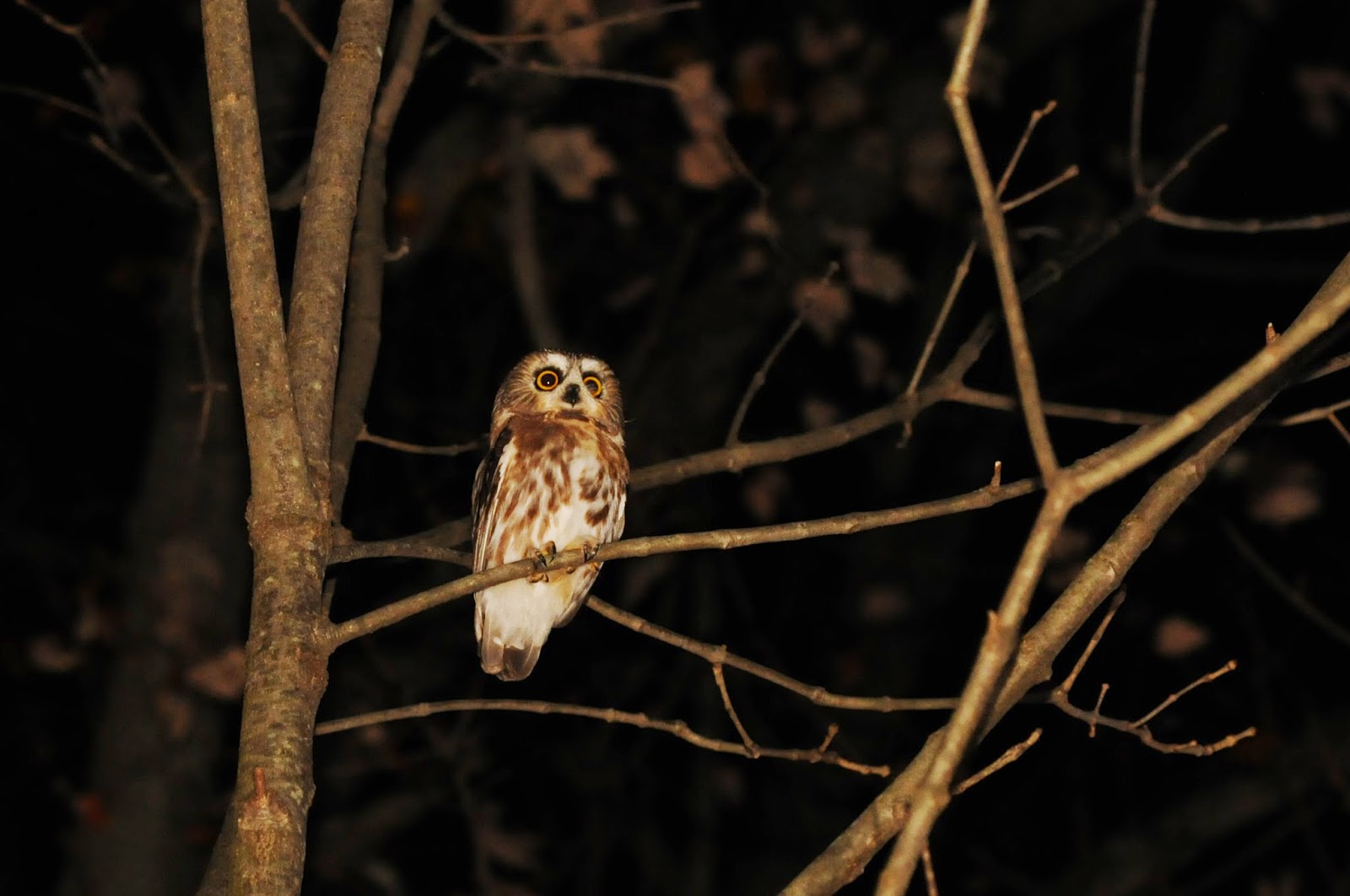Around 80% of the owls we've banded so far during our new Northern Saw-whet Owl migration survey
have been hatch year (first-year) individuals.
Although there are still a lot of ‘unknowns’, this phenomenon can be partially
explained by two important aspects of Saw-whet Owl biology: the first is that Saw-whets
exhibit a pattern of differential migration, wherein young birds tend to migrate
different distances or follow different migration pathways from adults; the
second is that a large proportion (perhaps as many as 4 out of 5) of these tiny
owls don’t survive long enough to celebrate their first birthday.
 |
| A first-year Saw-whet Owl © Tyler Christensen |
We know this stuff because owl banders all over the
Northeast have been recording the ages of every Saw-whet Owl they encounter
during fall migration.
But how do you tell the age of an owl? No matter how politely you ask, the owls just
don’t tell.
Instead, we have to infer an owl’s age by examining its wings. Owls, like many
birds, exhibit age-specific patterns of feather replacement. Normally discerning these patterns is a subtle
science, but thanks to an unusual pigment found in owl feathers called porphyrin (which causes freshly replaced
feathers to fluoresce bright pink under ultraviolet light) we can see these
patterns easily when the wing is viewed under a black light.
 |
| © Tyler Christensen |
The wing in the photo above belongs to a first-year Saw-whet
owl, just a few months after hatching.
The wing feathers all grew in at the same time, starting while the bird
was still in the nest. As a result, all
the wing feathers fluoresce a similar shade of pink.
 |
| © Tyler Christensen |
Second-year Saw-whets replace the outermost and innermost
wing feathers, but retain a block of juvenile wing feathers in mid-wing; the freshly
replaced outer and inner feathers now glow brighter pink than the mid-wing
feathers left over from last year. The
wing in the photo above belongs to a second-year owl.
 |
| © Tyler Christensen |
Owls in their third year or older begin replacing their
feathers in less predictable patterns, resulting in scattered blocks of bright
pink new feathers, dull pink intermediate feathers, and very old feathers
without any pink whatsoever. When a bird
exhibits this pattern, it is classified as ‘after second year’. The wing in the photo above belongs to an owl
that is at least three years of age.
The use of ultraviolet light makes aging owls a cinch. Most birds, however, don’t contain fluorescent
pigments, which makes aging a much more meticulous process. Either way, collecting demographic data
throughout a species’ range and across the seasons helps us understand some of
the big-picture aspects of bird ecology.
Saw-whet Owls are just one particularly colorful example.


















